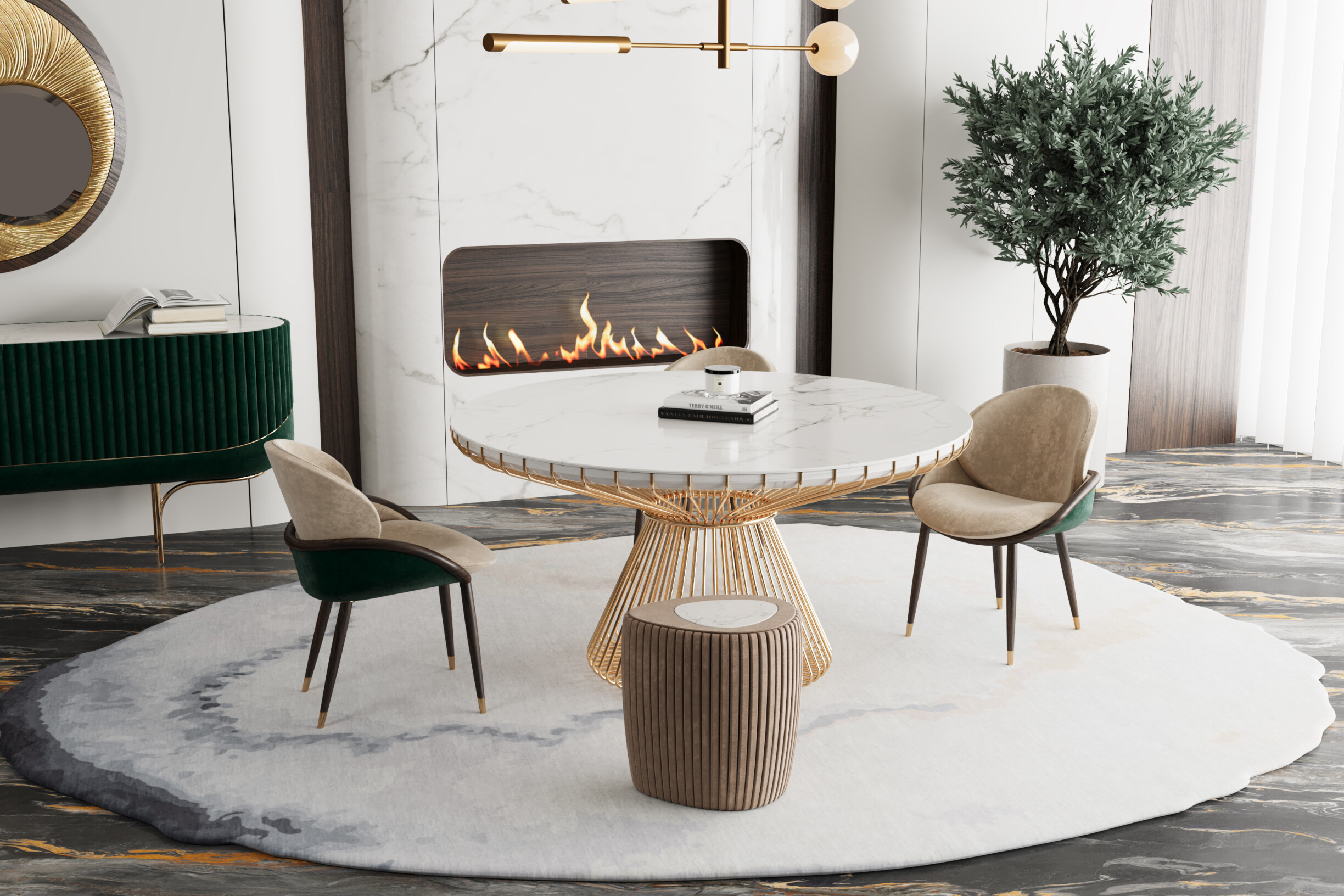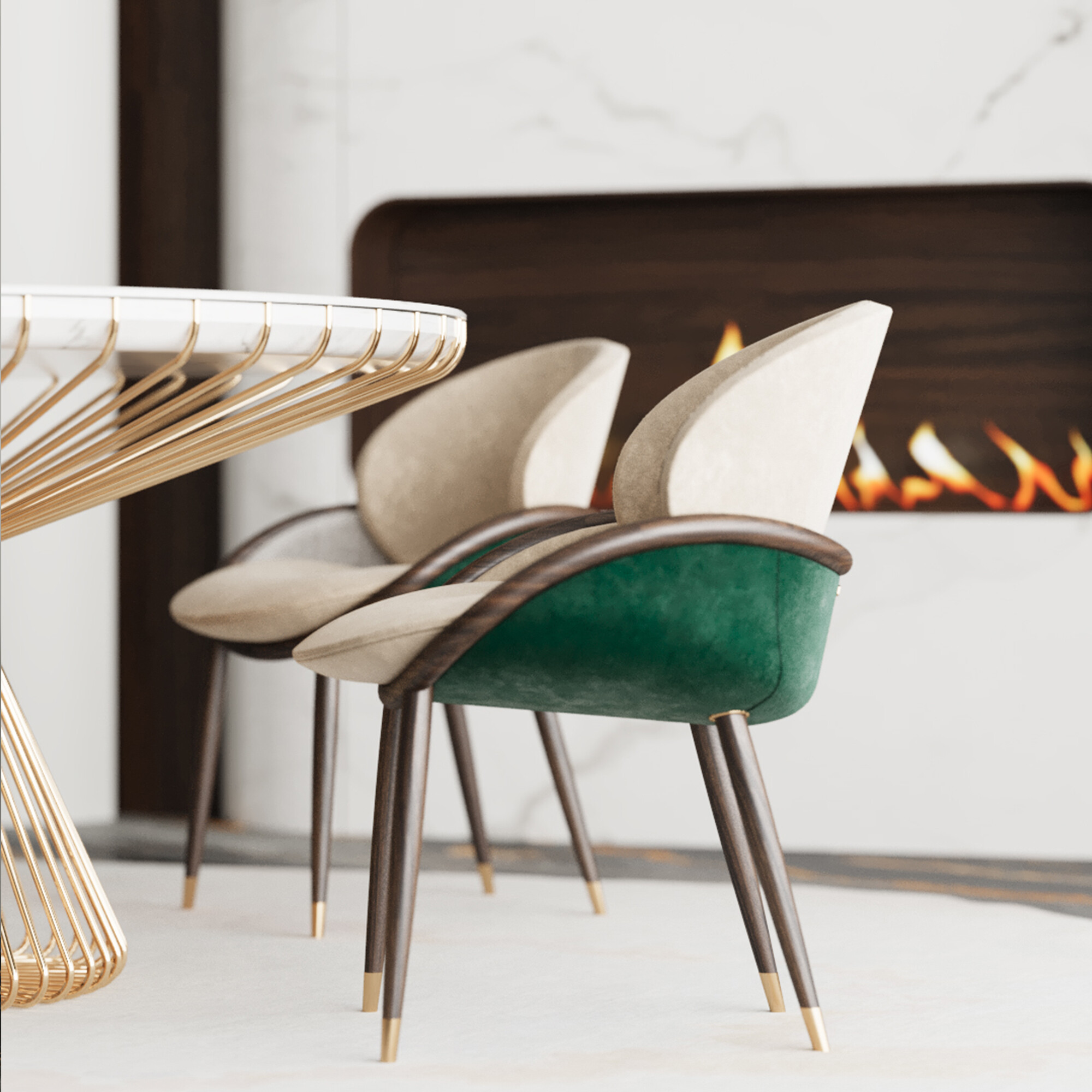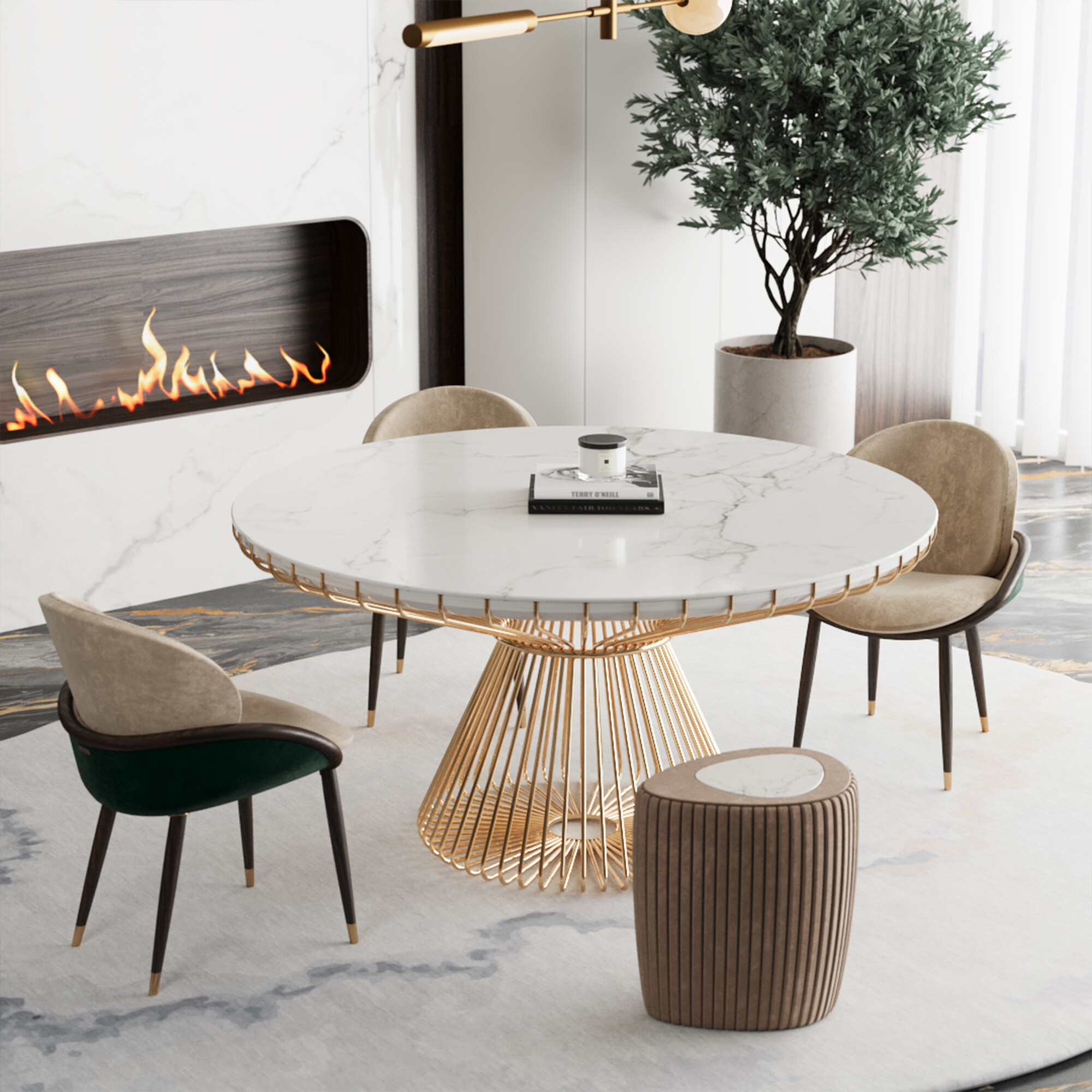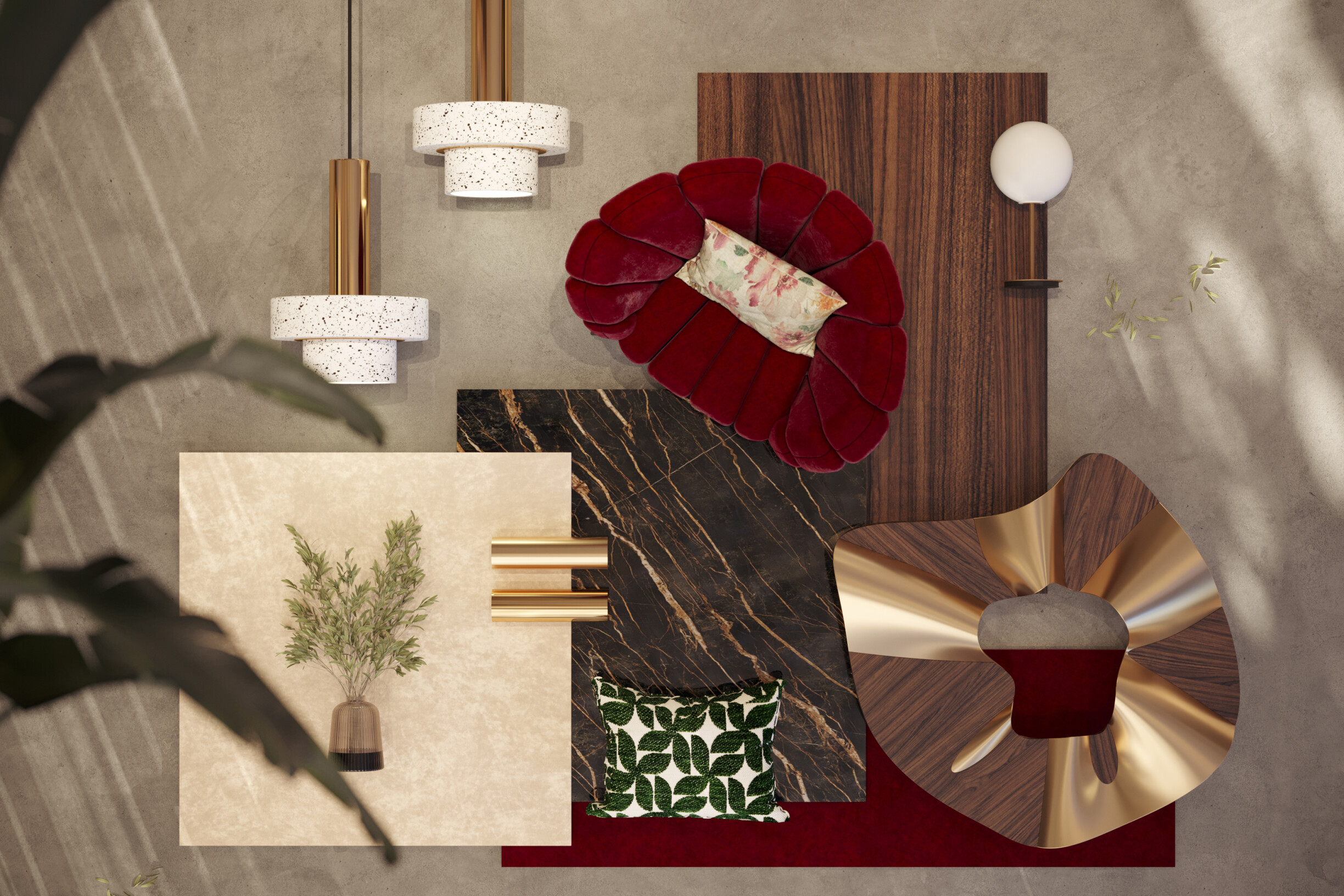The choice of materials becomes crucial in every interior design project. Interior designers and architects know that combining wood, metal, and glass can be the key to transforming a space, but the actual art lies in how these elements interact. This mixture of materials is essential for creating spaces with identity and depth. It balances robustness and comfort, shine and softness, light and solid.
Whether the aim is to evoke a sense of comfort through wood, to infuse a touch of elegance with the natural luster of metal, or to amplify luminosity with the use of glass, the art of material mixing demands a keen sense of balance and a meticulous eye for detail. Each project is a delicate dance between these materials, where the thoughtful selection of each element can determine the ultimate success.
Let's explore how to combine these three fundamental elements - wood, metal, and glass - to enrich interior projects. In this article, we will present the characteristics of each material, discuss the importance of harmony between different textures, and provide practical tips for creating balanced contrasts.

In contemporary interior design, mixing materials has become a distinctive signature of well-designed spaces. This approach helps overcome the monotony of monochromatic or uniform spaces, bringing visual and sensorial richness.
In the past, using a single dominant material - such as wood in rustic styles or metal in industrial environments - was common. However, modern design has evolved to favor the balanced integration of different textures and finishes.
The mix of wood, metal, and glass responds to the growing need for functionality and personalization. Each material offers unique characteristics that, when combined intelligently, can adapt to different styles and needs. This technique allows for creating flexible spaces where comfort and functionality coexist elegantly.


Wood introduces a natural element that connects the space with tradition, while metal and glass bring a more contemporary interpretation. This combination creates areas that follow the latest trends but also stand the test of time, remaining relevant in different contexts.

Designers and architects appreciate the freedom that the combination of metal, wood, and glass provides, and it is easy to see why. A space can be both sophisticated and welcoming:
Metal provides structure and minimalism.
Glass expands the light and the perception of space.
Wood adds texture and comfort.
Aside from the aesthetic and functional aspects, the mix of materials also aligns with the growing trend for sustainable design. Certified and recycled wood, reclaimed materials, and reused glass are options that address environmental concerns, giving projects an additional layer of meaning and responsibility. This emphasis on sustainability adds a unique character to the design and contributes to a more ethical and environmentally friendly approach to interior design


Choosing materials is one of the most significant decisions in interior design, influencing the aesthetics, functionality, and durability of a space. However, to make this decision, it is important to know the characteristics and advantages of three fundamental materials: wood, metal, and glass. Each has its own identity, and their combination can result in unique and sophisticated projects.
Wood is a versatile material in various species, textures, and finishes. Its visual richness and ability to be worked in different ways make it a popular choice in interior design. Each type of wood offers a colour palette that ranges from light to dark, and its natural grains and knots give a distinct character to each space or even to each piece of furniture.
What are the main advantages of using wood?
Comfort and coziness: wood is associated with feelings of comfort and warmth;
Sustainability: Wood is an environmentally responsible option when sourced from sustainable sources. Several certifications, such as the FSC (Forest Stewardship Council), guarantee the responsible origin of wood.
Durability: with proper care, wood can be highly durable. Although it can be susceptible to scratches and damage, its ability to repair and regenerate makes it a practical material in the long term.

Metal is a robust material with different finishes, such as stainless steel, aluminum, brass, and copper. Its surfaces can range from highly polished to textured, and its resistance makes it a durable and functional element.
What are the main advantages of using metal?
Modernity and elegance: metal is often associated with a contemporary style. Metallic elements, such as lamps, furniture, or accessories, can add a touch of sophistication to any room.
Versatility: metal can be used in various applications, from architectural structures to small decorative details.
Easy maintenance: metals are generally easy to clean and maintain. In addition, surfaces such as stainless steel are highly resistant to corrosion and stains.

Glass is a material that, when used well, can provide a feeling of lightness and openness to spaces. Available in various shapes and thicknesses, it can be transparent, frosted, or coloured, depending on the design intention.
What are the main advantages of using glass?
Expansion of space: glass creates a feeling of spaciousness, reflecting light and giving the impression of larger and more airy spaces.
Brightness: glass allows natural light to enter, reducing the need for artificial lighting during the day.
Modern aesthetics: glass is often associated with a contemporary and minimalist style. Elements such as glass tables or shelves can serve as accent pieces without overwhelming the space.

1. Choosing a dominant material
Determining a primary material helps create a cohesive base. For example, in a predominantly wood space (such as floors and furniture), metal can be used in details such as handles, lamps, or table and chair legs to add contrast without being overwhelming. Glass can be used for tables, creating a visual lightness. Try a table with a glass top and metal legs in a predominantly wood dining room.

2. Use contrasting textures and finishes
Mixing polished and rough surfaces can make a design more dynamic. For example, combine a natural wood table with matte black metal chairs to balance rustic and modern. Frosted glass on cabinet doors can soften rooms with lots of complex materials.
3. Maintain consistency with a colour palette
Even with different materials, a harmonious colour palette ensures unity and coherence. Use light wood and neutral-toned metal for a Scandinavian ambiance, or opt for dark wood and gold metal for a more sophisticated look.

4. Pay attention to visual balance
Avoid overloading the space with too many materials. If wood is already dominant in a living room, use glass for tabletops and metal for small decorative objects to avoid an overly heavy look.
The best way to ensure visual balance is to create a mood board, which allows you to visualize all the ideas, materials, colours, and thoughts for a given project.

5. Adjust the materials to the type of space
Glass can create partitions in an open space without blocking light. Metal is ideal for kitchens where aesthetics and functionality are combined. On the other hand, wood can provide coziness in bedrooms and living rooms.
A harmonious combination of wood, metal, or glass materials contributes to a more welcoming, attractive, balanced, and functional design. By combining these materials' different textures and characteristics, the space gains a new dimension.
Whether it's a corporate lobby, a contemporary living room, or a minimalist retreat, each element must communicate with the others and contribute to a coherent narrative. Designers and architects who master this language can create spaces that are more than the sum of their parts; they are complete and memorable experiences.
Did you like our tips? Stay tuned to our blog for more information and curiosities from the universe of architecture, interiors, and construction!
You can also follow us on Instagram, Facebook, and Pinterest for updates and news.